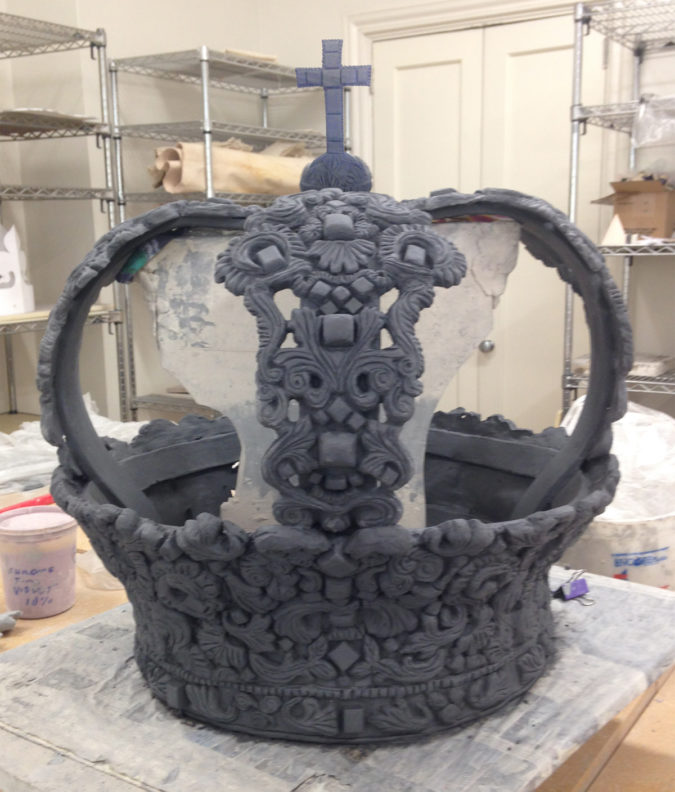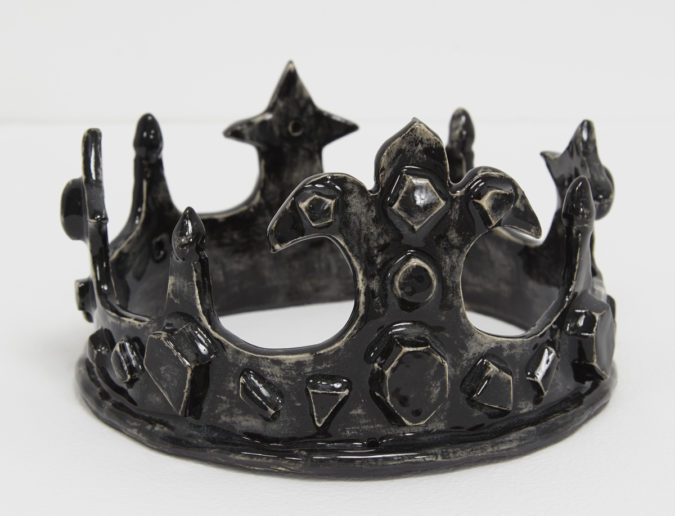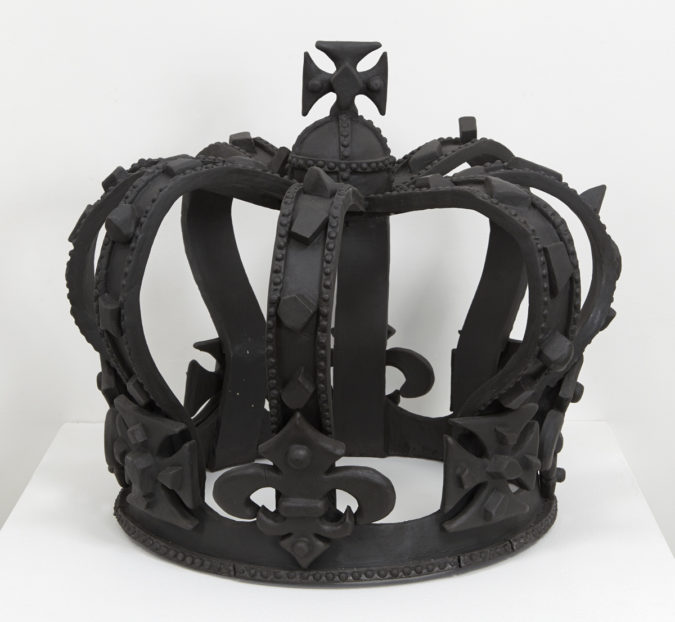Margaret Lanzetta
Margaret Lanzetta is a New York-based artist best known for her abstract culturally inspired work using digitized motifs drawn from Buddhism, 60’s pop culture, nature and contemporary industry. With varying media: painting, printmaking, and photography; and an enduring thematic interest in saturated color, repetition and pattern, a lexicon of motifs are used to explore larger issues of language, political power, spirituality, and cultural migration. In Lanzetta’s work patterns collide, and reappear from painting to painting, a use of seriality influenced by artists such as Andy Warhol, Philip Taafe and Yayoi Kusama. Hyperallergic editor John Yau has written, “Lanzetta undermines the sense of order and decorum normally associated with cultural and architectural patterns, transforming the decorative into something far-removed from paradise.”
Question:
The paintings you have been making over the last several years have addressed abstraction as pattern, exploring it by way of other cultures. Now you have begun a series of works in clay that are figurative, imperial crown forms from various countries. What is the connection between the painting and the ceramics?
Answer:
I have always been drawn to the beautifully crafted, decorative object. The crown series should be viewed as a continuation of my enduring interest with decorative crafts and culturally inspired patterns from various countries. My paintings and prints exhibit surface textures of industrial materials mixed with digitally manipulated patterns from nature, architecture, design, and traditional Asian textile motifs. My new work in ceramics and my painting/printmaking practice are related in that they both draw on a similar lexicon of motifs to explore larger issues of language, political power, spirituality, and cultural migration.

Crown of the Virgin of the Immaculate Conception, Crown of the Andes, ca 1593-1770, Popayán, Columbia work in progress, studio shot, un-fired mason-stained black porcelain, 22” x 14” diameter, Photo: courtesy of the Artist
I began collecting imperial crown images from illustrations and advertisements in 2011. Most crowns are objects of breathtaking workmanship created by anonymous artists to commemorate and honor everlasting dynasties. The imperial crown is also a manifestation of dichotomies: finely crafted, often with delicate filigree yet strong in construction; they invoke magical fairy tales while simultaneously exuding a sense of omnipotent power and dominance.
Design elements in an imperial crown will either reference a country or territory with which a ruler wants to form an alliance, or a country that a ruler has conquered. The lyrical, poetic terms describing these elements, fleur de lys, arabesque, or everlasting knot, belie the resounding royal power, authority and political autonomy a crown represents. Crown design elements can also include flora, fauna and architectural elements from local sources, as well as exotic patterns and motifs discovered in distant conquered empires. Thus, through the use of local and “borrowed” design elements, these magnificent, jewel-studded objects become testaments to place, conquest, and cultural migration.

The Crown of King Christian IV, ca. 1595, Denmark, white stoneware, black underglaze, 6” H x 8” diameter. 2016, Photo: Alan Wiener
As one of the first invited artists in the inaugural Greenwich House Pottery Residency and Fellowship for non-ceramic artists to work in clay, I was given an opportunity to explore this nascent interest in the crown form and symbol. I chose to work in porcelain, a clay body with its own palimpsest of regal symbolism.
To move beyond literal renditions of the opulent jewels and precious metals of most imperial crowns, the porcelain was dyed black with a metallic stain, which, after firing, resulted in a rich, saturated black clay body with a slight metallic egg-shell sheen. I used no glazes or paints. To pull the crown form from a conventional reading, I reduced and enlarged its traditionally human scale.
I selected several specific crowns to recreate in porcelain. Among them, and the oldest, the Crown of Wenceslas, the national crown of the Kings of Bohemia dated 1377, is considered one of the finest medieval crowns bearing 91 gems and 21 pearls. The St Edward’s Crown, official coronation crown and the oldest of the Crown Jewels in the United Kingdom, was another selection (the latest version of St. Edward’s Crown was re-made in 1661, and bears 444 semi-precious stones, gold beads, and was last used for the coronation of the Queen Elizabeth II in 1953). The final crown chosen is the Crown of the Virgin of the Immaculate Conception, also known as the Crown of the Andes, created for the statue of the Virgin Mary in Popayán, Columbia. This crown is the only one I referenced that was made for purely spiritual purpose. Its construction spanned 1593 -1770. With 450 emeralds reputedly seized from the Inca ruler Atahualpa, this one single object bears the world’s oldest and largest collection of emeralds in the world.

St Edward’s Crown, ca. 1661, United Kingdom, mason-stained black porcelain, 20” H x 14” diameter, Photo: Alan Wiener
In my work, decorative pattern and nature is persistently re-examined through a kaleidoscopic, shifting lens. The combination of historical, political, economic, environmental and spiritual aspects of cultures’ use of natural forms within patterns which has been central to my work as a painter has also, for this project at Greenwich House Pottery found resonance with imperial crown forms, a potent symbol of beauty, power and domination.





